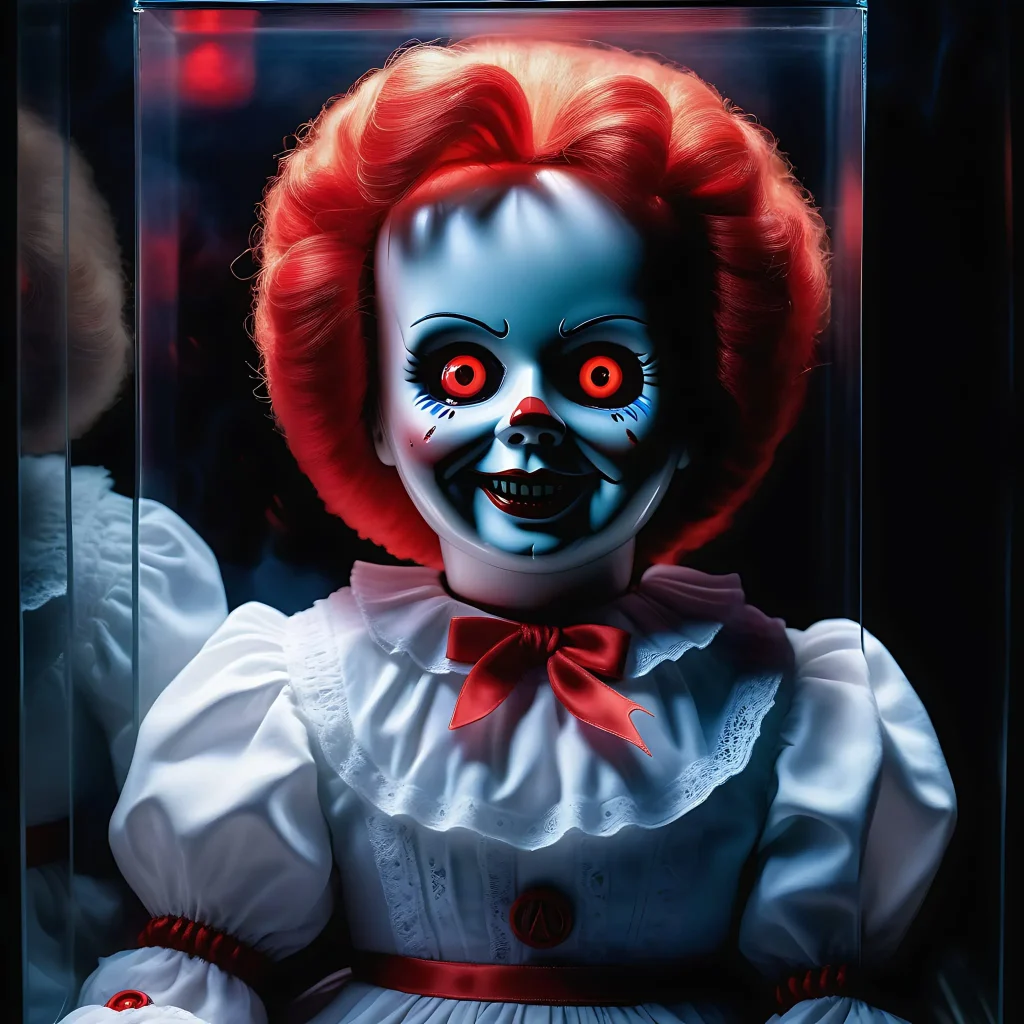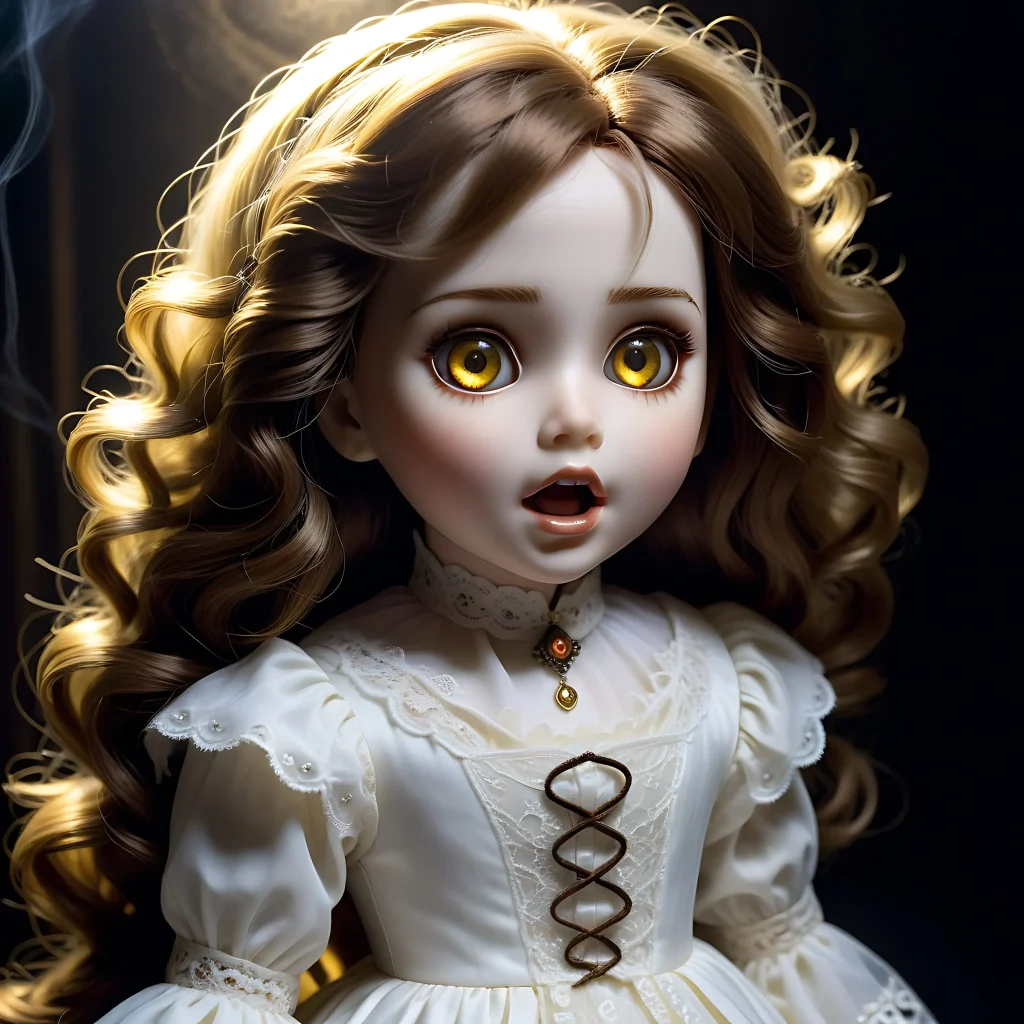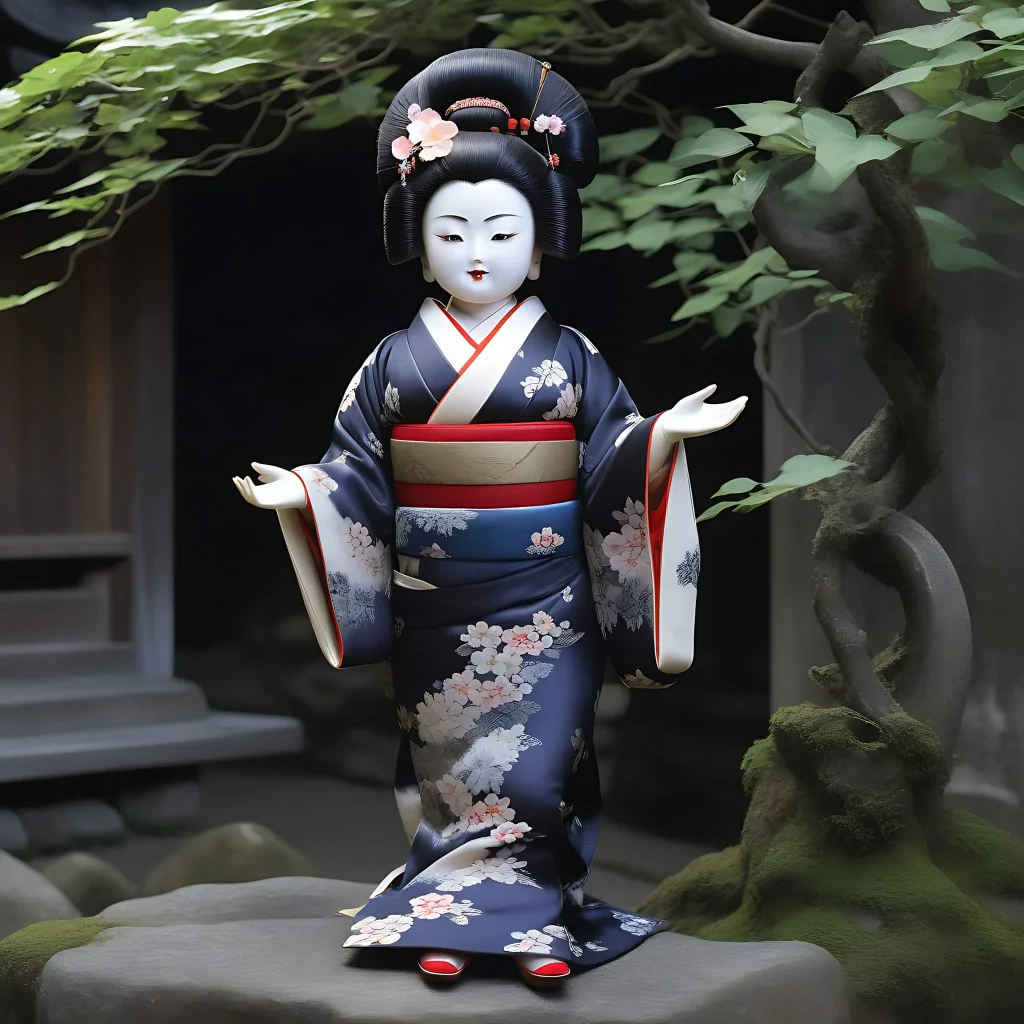In recent years, movies like “Annabelle” and “The Conjuring” have brought the concept of demonically possessed dolls into mainstream pop culture. Their blank eyes and frozen faces contrast eerily with alleged paranormal powers. While Hollywood no doubt exaggerates, real-life cases do exist of dolls said to move on their own, cause physical harm, or even bring death to those around them. Tales of these “haunted dolls” continue to spark viral internet fascination and heated debates between skeptics and true believers.
The public obsession with haunted dolls is hardly new, however. Documented legends of animated dolls and figures can be traced back centuries. From Jewish folklore’s narrative of the Golem, a clay figure mystically brought to life to defend the oppressed, to ancient Greek myths of the smith god Hephaestus crafting automotons and mechanical servants made of gold and silver, eerie tales of inanimate objects coming to life permeate across cultures.
In the 19th and early 20th centuries, Spiritualist beliefs fueled a rash of haunted doll cases in America and Europe. Mediums conducted countless séances claiming to attract the spirits of deceased children into porcelain dolls as physical vessels. The 1904 case of Thomas Otto’s supposedly possessed doll he named “Robert” captivated the public. Otto claimed the doll’s hair and facial features changed day by day. Other bereaved family members adopted similar practices, doting on dolls they insisted were inhabited by their dead sons’ and daughters’ spirits.
This piece will spotlight three notoriously creepy dolls whose ghostly legends continue to both intrigue and deeply disturb. We will analyze the true accounts behind Annabelle the Raggedy Ann doll said to be possessed by a demon, Pupa the doll whose unpredictable violent activity forced its owners to lock it away, and Okiku, the antique Japanese doll displaying the disturbing phenomenon of growing real human hair. What is it about these figures that simultaneously repels and captivates across generations? By probing their mysteries, we can unlock truths about societal anxieties, mortality, and perhaps glimpse the supernatural.
The Long, Creepy History of Haunted Dolls
While movies have recently popularized demonic dolls, their mysterious allure is far from new. Tales of possessed playthings tap into long-held societal fascinations and fears.
Dolls have served as children’s earliest toys for pretend play across cultures since ancient times. But folklore also warns of animated dolls taking on lives of their own. Some of the oldest haunted doll myths originate in Ancient Egypt, where wax figurine rituals were said to trap spirits of servants meant to follow their deceased masters into the afterlife. Greek tales featured the god Hephaestus’s gold and silver automatons that could walk and talk on their own accord.
The early 1900s saw Spiritualism shape many early iconic haunted doll cases still shrouded in mystery. The 1904 case of Thomas Otto’s “Robert the Doll” captivated the public with reports of the doll’s facial expressions shifting day by day. Otto blamed a Bahamian servant girl who supposedly cursed the doll after being mistreated. Robert’s legend grew with subsequent family members and guests reporting the doll moving rooms on its own.
Other families conducted séances using dolls to attract their dead children’s spirits, like the Dingwall family’s doll Imogen. Often given as gifts, these “spirit dolls” were lovingly cared for as extensions of deceased sons and daughters. Spiritualist beliefs also fueled commercial ventures like the Mystic Skulls game and Arkham Horror’s haunted doll props aimed at communicating with spirits.
As Spiritualism declined, haunted doll myths persisted through horror films and urban legends. Notorious names like Annabelle or Robert were borrowed for frightening fictional tales, further blurring unsettling reality with fantasy. This mystique endures today through internet lore and paranormal investigating shows, proving society remains uneasily fascinated by dolls that defy explanation.
Annabelle: The Infamous Haunted Raggedy Ann Doll

Perhaps no haunted doll rivals the notoriety of Annabelle, the allegedly demonically-possessed vintage Raggedy Ann doll made famous by Hollywood horror films. But what is the true story behind the pop culture icon of terror?
The Real-Life Origins of “Annabelle”
Annabelle’s creepy legend can be traced back to 1970 in Santa Monica, California. A woman named Donna received the Raggedy Ann doll from her mother as a birthday gift. Donna lived with her roommate Angie, who enjoyed sewing clothes for the doll. Shortly after, the roommates noticed odd behavior including the doll changing positions and rooms inexplicably. However, things took a dark turn when written notes of parchment paper appeared throughout their apartment with chilling messages like “Help Us” or “Help Lou”, apparently from the ghost of a deceased girl named Annabelle Higgins.
Terrified, Donna contacted a medium who informed them the doll was likely possessed by an inhuman, demonic spirit longing to inhabit a human body. The medium warned them not to give the sinister entity permission, as it could then haunt or possibly kill them. Despite taking the Annabelle doll and discarding it, paranormal incidents persisted. The girls turned to infamous demonologists Ed and Lorraine Warren for help.
Eyewitness Accounts of Annabelle’s Chilling Power
The Warrens confirmed an evil presence surrounding Annabelle. They took the doll to prevent harm to others, where it still resides locked in their occult museum. Those near Annabelle describe an ominous aura and instinctual discomfort around it. The Warrens relay witness accounts of furniture moving on its own in the doll’s presence along with other unsettling phenomena. Despite skeptics, many believe Annabelle possesses an actively malevolent force.
The Unsettling Power of Annabelle
Years after Ed and Lorraine Warren took possession of Annabelle, her powers seemed only to grow. The rag doll remains locked inside a special protective case lined with Scripture at the Warrens’ Occult Museum. But those who come close describe feeling drained, nauseated, or overcome with unease in Annabelle’s presence.
In 2006, a museum visitor defiantly mocked Annabelle and the belief she was anything but an inert doll. Yet soon after, the skeptic experienced a sudden motorcycle crash resulting in his death. When his fiancée contacted Lorraine Warren distraught, Lorraine consulted psychic medium Mary Ellen who had a troubling vision. The vision revealed Annabelle had indeed caused the crash indirectly through a random object.
Ed Warren has stated he does not doubt Annabelle’s ability to manipulate environments to her favor and induce paranormal phenomena. Assistants and visitors have reported objects thrown by unseen forces in Annabelle’s vicinity. Others describe cold spots, goosebumps, and even temporary blindness when viewing her case. The Warrens also claim a former museum curator once saw Annabelle levitating in her sealed case. Though claims can’t be proven, many insist Annabelle possesses an actively hostile, even deadly force requiring her imprisoned state.
Annabelle’s Enduring Legacy
Today, Annabelle remains locked within a special exhibit at Ed and Lorraine Warren’s Occult Museum in Monroe, Connecticut. The museum continues operating with the help of Ed and Lorraine’s assistant Judy Harrell, who took over its direction after Lorraine’s passing in 2019. Visitors can view the Raggedy Ann doll encased behind glass and sealed with Scripture-inscribed parchment. An eerie aura surrounds her display.
Over the decades, Annabelle has inspired many frightening fictional tales in both movies and books that borrow elements from her real-life story. These include the horror hits “The Conjuring” and 2014’s “Annabelle” spinoff film. Annabelle’s creepy visage even appears in haunted house attractions like McKamey Manor. Her story also continues intriguing paranormal investigators and ghost hunting shows including a 2021 episode of The Ghost Adventures documentary series titled “The Haunted Doll”.
On the Internet, legends of Annabelle’s powers have reached mythic proportions. Chat boards and Reddit threads share secondhand ghost stories referencing her malevolent abilities. Some claim she caused sudden illness or even a death of those daring to doubt her. Others describe feeling chilled viewing mere images of the doll online. While likely exaggerated, these rumors speak to an enduring fascination and unease stirred by the figure behind one of America’s most iconic “haunted doll” cases that persists over 50 years later.
Pupa the Doll: The Quesada Family’s Tormented Plaything

Beyond Annabelle lies another notoriously creepy doll with a harrowing history – Pupa the Doll of Argentina. This trouble antique toy once tormented the Quesada family through increasingly violent poltergeist activity.
Pupa’s Tragic Fictional Origin Story
While Pupa’s true origins remain unknown, custom holds that she belonged to a young girl in the late 1800s. As one chilling tale goes, Pupa’s original owner tragically took her own life at age seven by leaping from her family’s balcony clutching her beloved doll. The reasons vary – some say the child was abused by her governess. Others claim she was distraught over her father’s death. In any version, Pupa becomes a vessel for the little girl’s anguished spirit.
For years, locals passed around legends of the haunted doll crying real tears or making floorboards creak on her own. Some even say she whispered a name – “Pupa”. Eventually she ended up with the Quesada family through mysterious circumstances beginning her reign of terror.
Violent Poltergeist Activity
The Quesadas soon reported strange incidents whenever Pupa was around, including objects thrown about their home by an unseen force. However events grew darker…
Pupa’s Violent Poltergeist Attacks
As Pupa’s presence continued tormenting the Quesadas, disturbances escalated from objects moved to violent attacks. The family reported being scratched, bitten, and hit by an invisible force, always near the doll. Visitors also felt themselves punched, hair pulled, and pushed downstairs violently, even posited the doll could induce sickness.
In one dramatic instance, the teenage daughter left Pupa in the kitchen while cooking. Moments later blood-curdling screams rang out as she raced from the room deeply scratched, claiming Pupa had chased her. Despite constant priest blessings and cleansing attempts, mayhem followed Pupa from room to room.
The Quesadas reached their limit when Mr. Quesada was reportedly levitated and flung 8 feet upon entering Pupa’s room. After that, the terrified family encased Pupa inside an iron vault in their home, leaving only when necessary. Paranormal investigators who’ve observed Pupa in action uphold no natural explanation. Many believe a demonic force inhabits the doll.
A Demonic Inhabitant?
Some theorize Pupa became inhabited by a non-human intelligence – perhaps latching onto the anguished spirit of the little girl from her tragic fictional tale. Researcher Anthony Sanchez examined the Pupa case. He concluded the violent poltergeist outbursts evidence an attempt to manipulate environments to create fear and pain – suggesting an actively malevolent, even demonic entity controls Pupa rather than a lingering human ghost.
Today, the Quesada family keeps Pupa’s vault under lock and key, unleashing her unsettling presence only for the most daring investigators. Her story remains among the strangest and most violent haunted doll cases recorded.
Decades later, Pupa remains sequestered away in the Quesada’s family vault, only periodically removed for documenting efforts. The doll herself appears deceivingly innocent – some describe her as angelic, even. Yet veteran paranormal researchers uphold Pupa as one of the most credibly haunted objects they’ve encountered, with dramatic historical evidence.
Attempts to explain Pupa rationally fall short. Investigators rule out hoaxes, hallucinations or misperceptions. Why would multiple family members and visitors share identical violent encounters over years? Some posit the doll carries an intelligent, non-human spirit. If so, why does its anger manifest through physical attacks? And could a mere inanimate object contain such power?
For now Pupa’s origins and the extent of her capabilities remain shrouded in mystery. The Quesadas refuse to let the doll fall into private hands, fearing the chaos that could unleash. For them, the memories and scars left by Pupa’s dramatic outbursts linger as warning enough, keeping her encased out of necessity. The cryptic events surrounding Pupa endure as one of Argentina’s strangest and most alarming paranormal sagas.
Okiku – The Antique Doll That Grows Hair

A lesser-known yet deeply creepy “haunted doll” hails from Japan – the antique figure Okiku, named after a tragic ghost character from folklore. Housed in a Japanese temple for centuries, Okiku uncannily produces real human hair from her head that must be trimmed by priests.
Okiku’s Centuries-Old Legend
Okiku’s namesake stems from 18th century Japanese ghost stories. These tales tell of a servant girl named Okiku who worked for a samurai warrior. After cruelly breaking one of his treasured plates, the warrior tortured Okiku by throwing her down a well to drown. Her anguished ghost rose from the well, counting dishes and always stopping at nine – the broken one.
Inexplicably, an antique doll offered to the Mannenji temple in Iwate Prefecture centuries ago was named Okiku by priests. Its small wooden body wears a kimono of woven silk. According to legend, not long after the doll’s arrival, temple members made an unsettling discovery – the doll appeared to be growing human hair from its head that needed periodic trimming.
Eyewitness Accounts
Through the decades, visitors to Mannenji temple have reported witnessing Okiku’s hair growth firsthand. While some periods show more intense growth ranging from half an inch to several inches monthly, witnesses all confirm the hair texture as human. Priests dutifully hold hair-cutting ceremonies for Okiku, further fueling her mystique. Analysis shows the hair matches no temple members or known DNA sources, deepening the mystery.
Okiku’s case reflects the Japanese concept of tsukumogami – inanimate objects becoming self-aware after 100 years and perhaps taking on a soul. Could Okiku’s namesake history have shaped her animating spirit? Or might a more supernatural force be at work? Her legend continues to fascinate and unsettle.
Several theories attempt explaining Okiku’s remarkable hair growth. Skeptics initially suspected tricks by the temple to gain fame. However, witnessed accounts span over a century with no evidence of deception. The temple permits no public access to Okiku except on ceremony days, limiting contamination. If a hoax, how could hair continue growing so persistently?
Paranormal theories abound. Some Eastern folklore experts reference spirit possession, suggesting Okiku could house the soul of the tragic servant girl from her 17th century legend. The story tells of Okiku drowning in a well – perhaps lack of hair grooming in death underlies her fixation with hair growth in the doll.
More scientific views propose biological root causes. Could the silk kimono provide nutrients generating hair? Analysis of the hair itself shows no abnormal DNA, however, appearing human. Others suggest humidity and heat as growth accelerators, yet cannot fully account for the enigmatic rate and texture changes.
For now Okiku’s origins stay shrouded in mystery. Temple caretakers continue holding private hair-cutting ceremonies for the doll, content with upholding tradition. Each trim gathering up the antique doll’s locks to be burned in a quiet ritual. All while her legend as Japan’s most mysteriously “haunted” doll endures.
What Makes Haunted Dolls So Captivating Yet Creepy?
Tales of “haunted” dolls like Annabelle, Pupa, and Okiku share deeply unsettling yet fascinating commonalities. What is it about these playthings that simultaneously repels and captivates imagination across cultures?
Manifesting Societal Fears
Haunted doll folklore likely represents deeper cultural fears. Their frozen, human-esque appearance contrasts eerily with alleged supernatural traits. Like horror films, they manifest subconscious anxieties. Folklorists see links to early childhood development themes. Their lifeless gaze mirrors fears of abandonment. Their movement without visible cause violates expectations. Legends give them a mouthpiece for past injustices.
Violating the “Uncanny Valley”
Their visual nature may also trigger the discomforting “uncanny valley” effect. This describes revulsion people feel towards human-like objects appearing not quite real. Possessed doll cases often describe a wavering between inert and animate. Witnesses reference subtle facial shifts in Robert or Okiku’s hair growth. Such unreliable “almost human” cues instinctually disturb. They violate reassurances about reality’s rules.
Representing Helplessness Against The Unknown
Particular unease also stems from haunted dolls’ supposed supernatural traits defying containment. Despite imprisoning efforts like Annabelle’s locked case, their power seemingly persists. And without predictable physical “tells”, we cannot assess the threat. This represents society’s most basic fear – helplessness against invisible forces. Much like pandemics, the lack of control breeds fear. Haunted dolls symbolize these timeless uncertainties.
Clearly, haunted doll myths touch on visceral societal nerves. Like all great horror icons from zombies to ghosts, they encapsulate broader cultural dread. Their static faces reflect mortality’s inevitability. Their misplaced liveliness reminds all matter dies yet also transforms. And their unpredictable violence warns reality follows no rules.
Yet we cannot look away. Why the irresistible pull towards these symbols of chaos and demise? Perhaps they connect today’s rapidly changing, technology-focused world back to mortality’s unchanging cycle. Or being confined to a physical shell gives them an otherworldly patience we lack. They also represent childhood’s end – the loss of imagination’s freedom to determine one’s own reality.
Now with the Internet’s blurred reality, every rumor gains digital wings. Unlikely legends transform into shared truth crafted by collective consciousness. Through images and stories, haunted dolls turn folklore into “experience” crossing borders. Their appeal persists because they violate our deepest human instincts about life and death…while also speaking to timeless spiritual hopes that consciousness never dies.
The Allure Lives On
As we’ve seen, haunted dolls like Annabelle, Pupa, and Okiku possess an unlikely hold on public imagination despite far-fetched roots. Their outlandish legends somehow continue creeping into pop culture infamy decades later.
Clearly, the mystique underlying haunted dolls reveals deeper societal nerves about mortality, uncertainty, and forces beyond our control. Their frozen uncanny features oddly mirror timeless questions about existence itself.
While today’s CGI-filled entertainment often loses resonance, perhaps these physical totems endure because they stand as relics of lost folk rituals that once guided understanding about life’s endless cycle. As much as their strangeness unsettles, they also feel akin to oracles – whispering forgotten wisdom about existence’s magical beginnings and inevitable ends.
Now it’s your turn – do you find haunted doll myths captivating or creepy? Share your thoughts in the comments!




